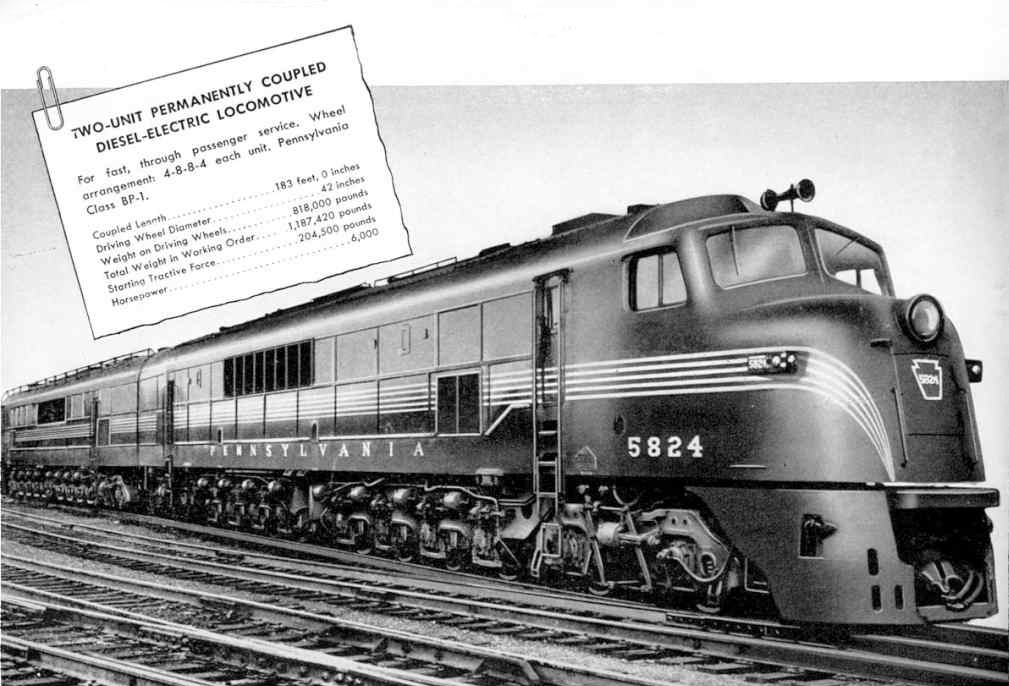Diesel of the Day 7/30: Baldwin DR-12-8-1500/2
13Today’s diesel is a mouthful: the Baldwin DR-12-8-1500/2, better known as the Centipede. With a model number almost as long as the diesel itself, a nickname was inevitable…and it fits! In North American notation, this diesel is a 2-D+D-2, meaning it has 2 leading axles, two sets of four driving axles, and 2 trailing axles…that’s a total of 24 wheels! Hence, the nickname. The model number means Diesel Road locomotive, 12 axles (with 8 powered), with 2 engines of 1500 horsepower each. Whew! Power was provided by a pair of Baldwin 608SC turbocharged four-stroke inline 8 cylinder engines, developing a total of 3,000 horsepower. (Curiously, despite the ‘SC’ suffix indicating ‘super charger,’ the engines were actually turbocharged.) 56 were built between 1946 and 1948. Despite its massive stature, the Centipede could haul trains at speeds greater than 90 MPH. When they worked. These units were essentially hand-built, so there were variations in subsystems from diesel to diesel, creating problems with routine maintenance. Wiring was especially troublesome, as were the engines. The units tended to leak oil, coolant, produce excessive smoke, or even catch fire…sometimes all at once. To make matters worse, EMD had a vastly superior product from most angles, so the Centipedes were practically outdated even when new. It should come as no surprise, then, that none of the original production made it into preservation, with all 56 locomotives believed to be scrapped. Today, all we have are old photographs, like this promotional image from the Pennsylvania Railroad that shows a two-coupled set, with specs for the combined unit.

- 5 comments, 2 replies
- Comment
So, where I expect to see fuel tanks… it’s just wheels!
Where does the fuel ride?
16 cylinders, 12 axles, 3,000 hp - it seems like it would be thirsty.
@Euniceandrich That’s a good question! I’d assume the fuel tank is inside the frame somewhere above the trucks, perhaps between the engines.
Go Baldwin!

That’s a handsome locomotive, it’s a shame they couldn’t make them run reliably.
The two-unit has 6000 horsepower, but weighs nearly 600 tons working weight. That seems like a terrible power to weight ratio. (My little car only weighs a ton and is considered under powered with 125 hp.)
Am I missing something here? Or is this due to the differences in measuring drawbar horsepower versus brake horsepower?
@2many2no The actual measure of a locomotive’s pulling power is tractive effort, which in the case of the two-unit Centipede set (about 200,000 pound/feet) isn’t all that bad, actually.
It is pretty
/giphy Baldwin
